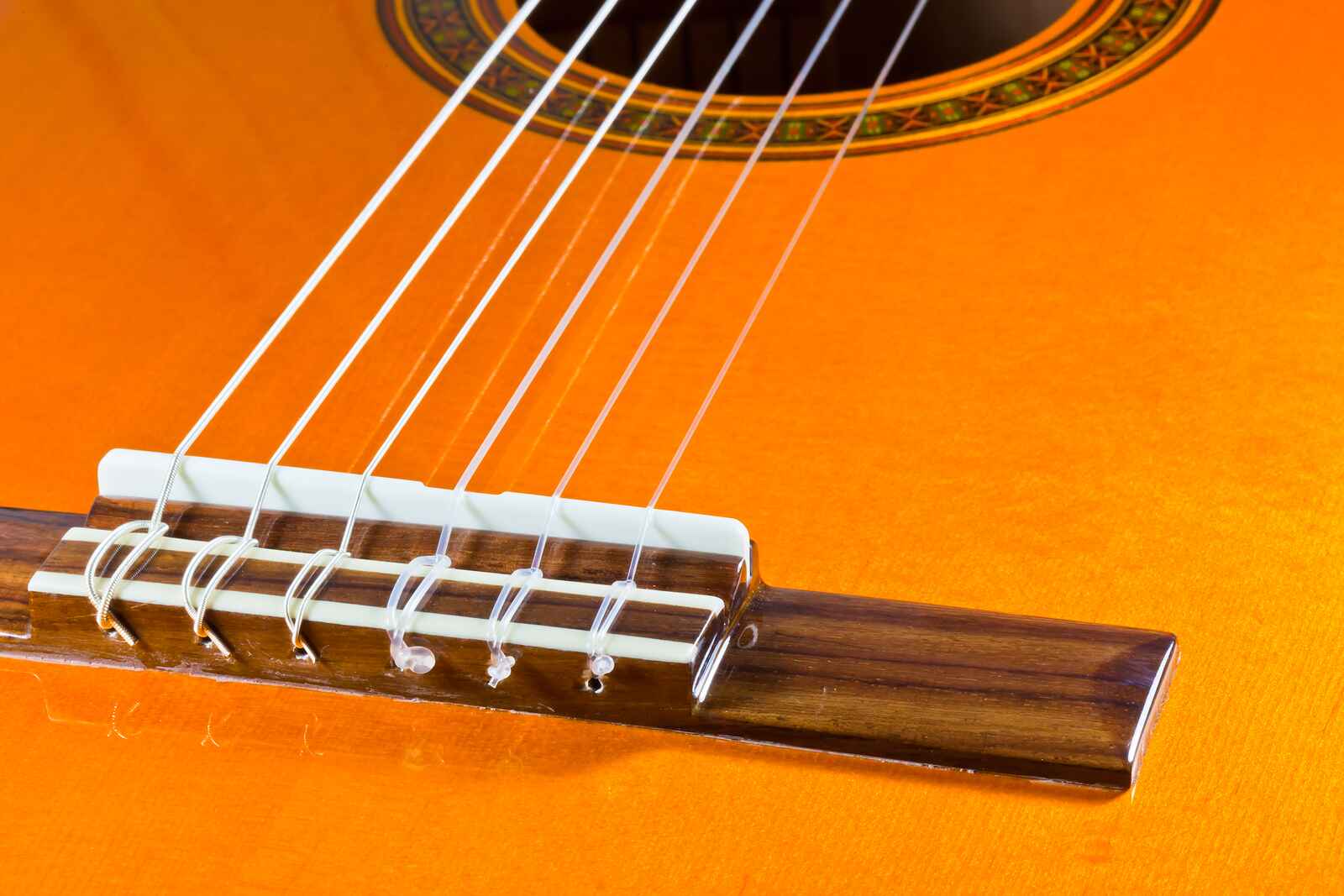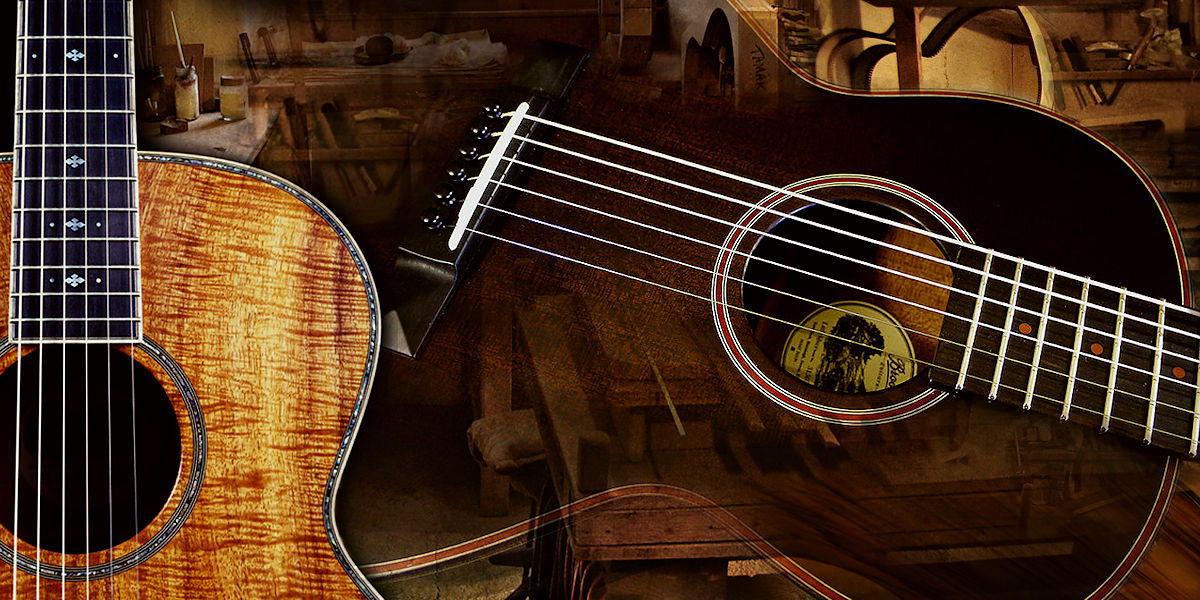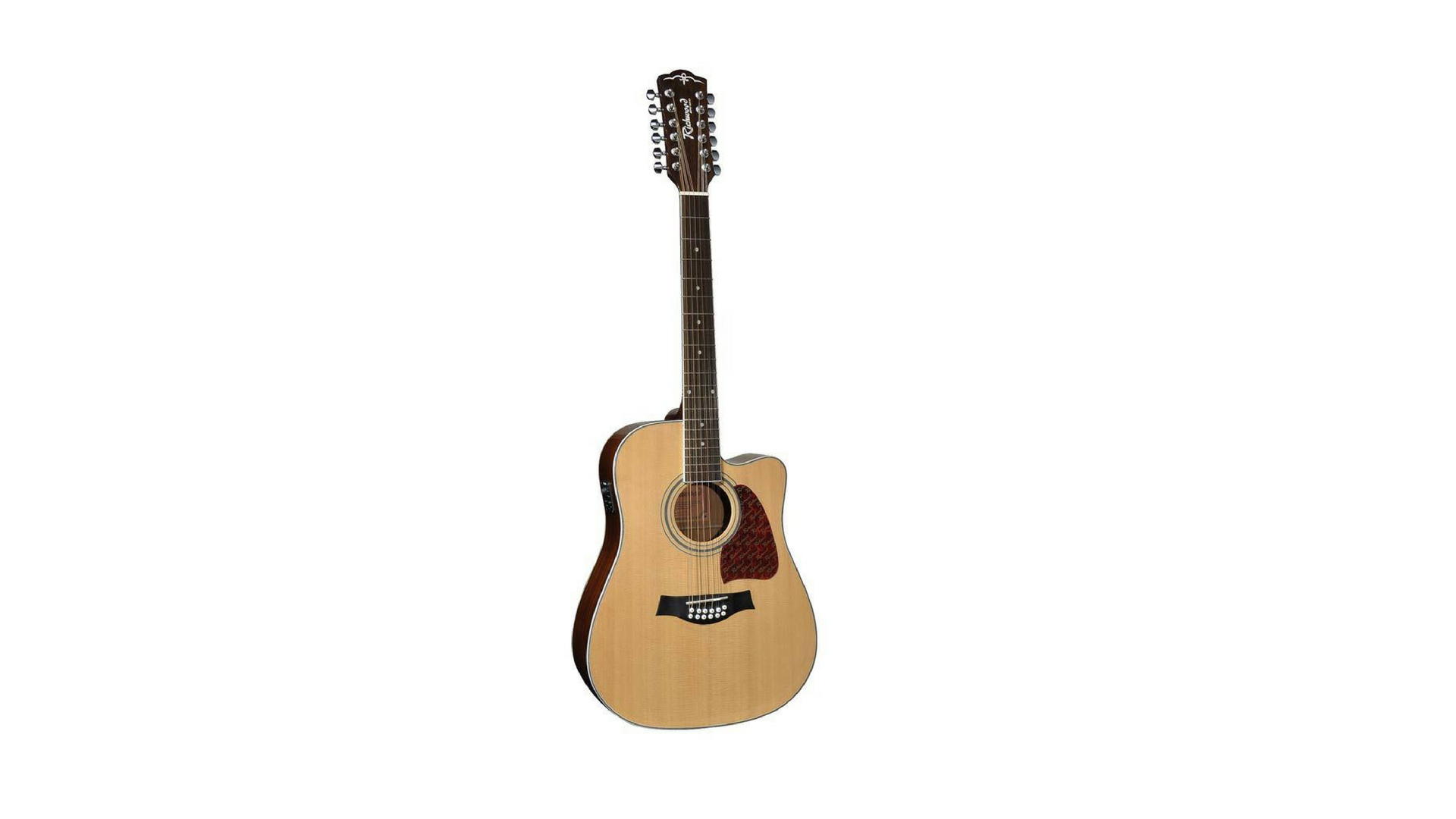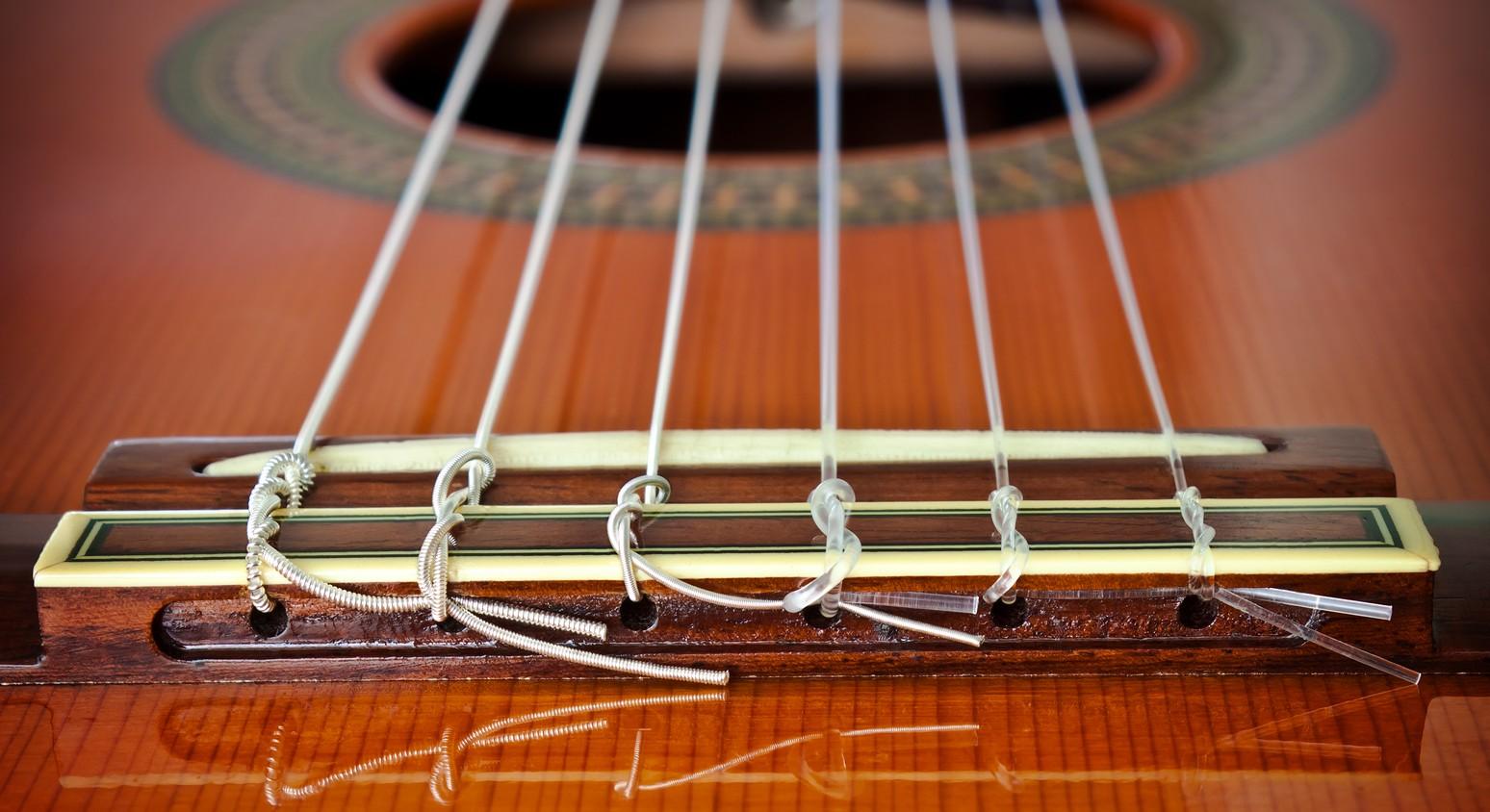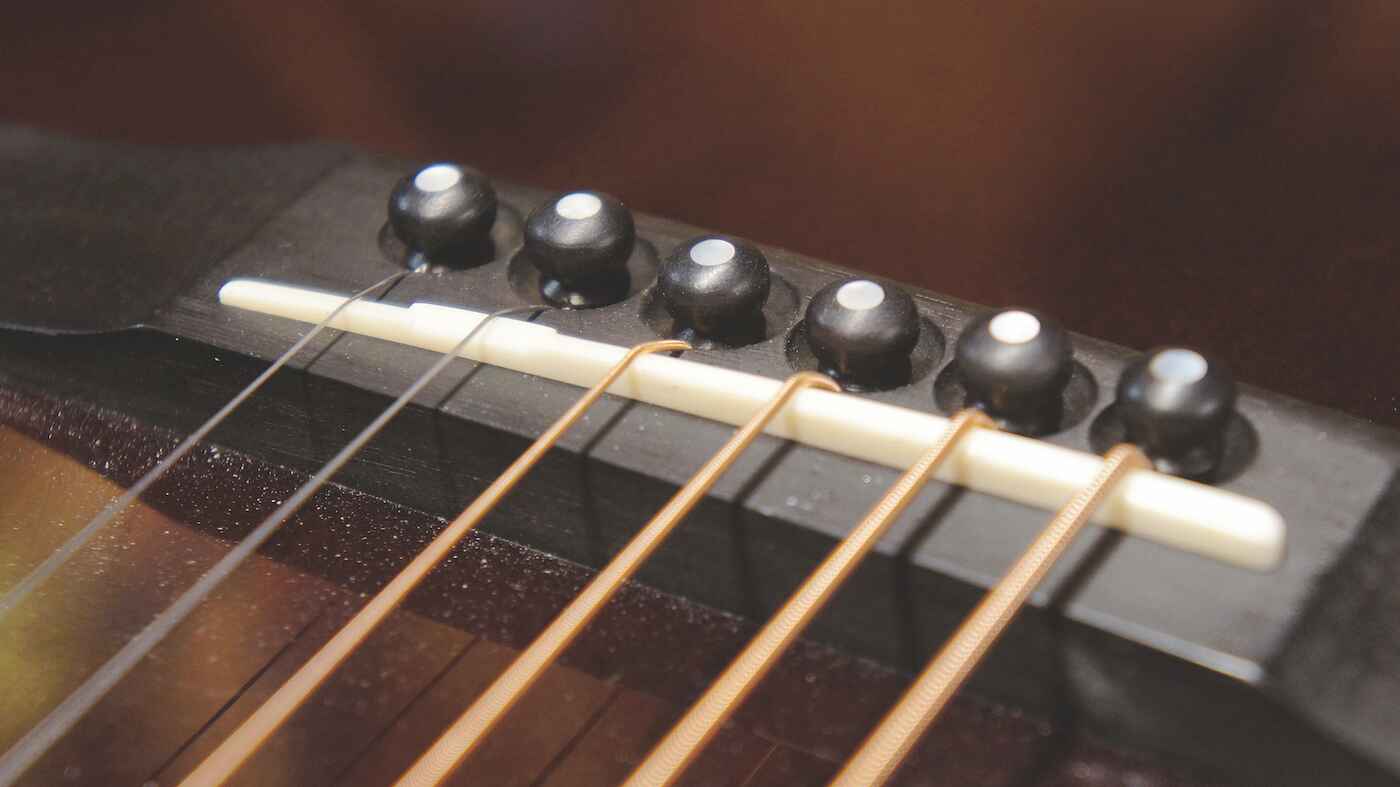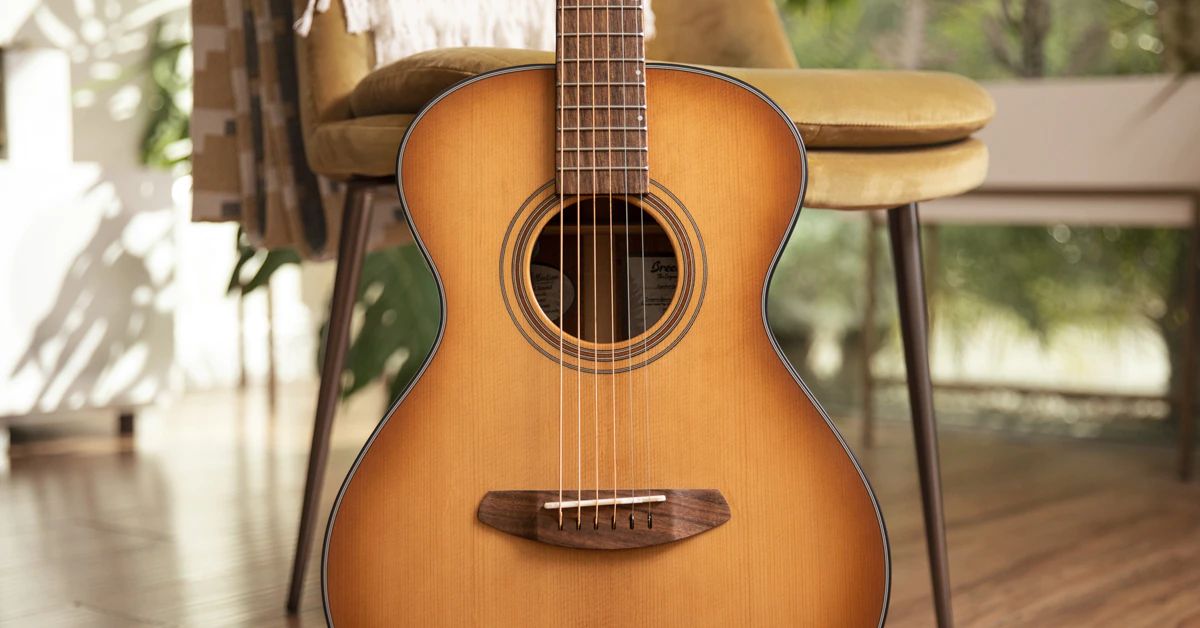Introduction
Acoustic guitars are beloved for their warm tones, rich harmonics, and versatile sound. While many factors contribute to the unique sound of an acoustic guitar, one crucial element is the strings used. The type of strings you choose can greatly impact the tone and playability of your instrument.
Acoustic guitar strings come in various materials, each with its own characteristics and qualities. Understanding the different types of strings available can help you make an informed decision when it’s time to restring your guitar. In this article, we will explore the various materials used to make acoustic guitar strings and their unique qualities.
From traditional materials like nylon and gut to modern innovations like steel and coated strings, there is a wide range of options to suit different playing styles and musical genres. Whether you’re a beginner or an experienced player, it’s essential to know the differences between these string materials to find the right sound for your playing style.
So, if you’ve ever wondered what your acoustic guitar strings are made from and how it affects your playing experience, read on as we dive into the world of acoustic guitar string materials.
Note: It’s important to mention that this article focuses primarily on the materials used in steel-string acoustic guitars. Classical or nylon-string guitars follow a different string material construction, which we will cover separately.
Nylon Strings
Nylon strings are commonly used on classical and flamenco guitars. They were introduced as an alternative to gut strings in the mid-20th century. Nylon strings offer a mellow and warm tone, making them ideal for fingerstyle playing and classical music.
One of the advantages of nylon strings is their softness. They are easier on the fingers, making them more comfortable for beginners or players with sensitive hands. Additionally, nylon strings are less prone to causing finger fatigue during long practice sessions.
Another characteristic of nylon strings is their lower tension compared to steel strings. This lower tension gives the strings a more flexible feel, allowing for easier bending and vibrato techniques. However, the lower tension can also result in less volume and projection, especially when playing with a pick.
Nylon strings are made from a polymer called nylon, which is a type of plastic. This material offers durability and stable intonation, making nylon strings less susceptible to temperature and humidity changes. It’s important to note that nylon strings typically take longer to settle and stabilize in pitch compared to steel strings.
There are different variations of nylon strings available, including clear nylon and rectified nylon. Clear nylon strings provide a more balanced and articulate tone, while rectified nylon strings have a rougher texture that enhances the grip for better control and string articulation.
In summary, nylon strings are known for their warm, mellow tone, comfortable playability, and stable intonation. If you’re a classical guitarist or prefer a softer sound with less finger fatigue, nylon strings might be the right choice for you.
Gut Strings
Gut strings have a long history and were the primary material used for string construction before the advent of nylon and steel. Made from the intestines of sheep or cows, gut strings offer a unique and distinctive tone that many players love.
Gut strings produce a warm and complex sound with rich harmonics. They have a natural, organic quality that is particularly desirable for players of historical or traditional music styles. Many classical guitarists and luthiers still prefer gut strings for their authenticity and the vintage sound they can achieve.
One of the main characteristics of gut strings is their elasticity and responsiveness. They have a soft and pliable feel under the fingers, allowing for subtle nuances and expressive playing. This responsiveness makes gut strings ideal for classical and baroque music, where intricate passages and delicate dynamics are essential.
However, gut strings are more sensitive to changes in temperature and humidity compared to synthetic materials. They require extra care in terms of maintenance and tuning stability. It’s not uncommon for gut strings to require frequent re-tuning, especially during seasonal changes.
Additionally, gut strings have a shorter lifespan compared to nylon or steel strings. They are more susceptible to wear, moisture, and the natural oils from your hands, which can degrade their quality over time. Regular cleaning and maintenance are necessary to keep gut strings in optimal condition.
Despite the challenges, many guitarists choose gut strings for their unique tonal characteristics. They offer a timeless sound and a connection to the history of guitar playing. If you’re a player who values authenticity and vintage tones, gut strings might be the perfect choice for you.
Steel Strings
Steel strings are the most common type of strings used on modern acoustic guitars. They are made from a steel core wrapped with various metals, such as bronze, phosphor bronze, or nickel-plated steel. Steel strings offer a bright and dynamic sound that is well-suited for a wide range of musical genres.
One of the key advantages of steel strings is their increased volume and projection. The steel core and metal wrapping provide a strong and vibrant tone that can cut through a mix, making them popular among singer-songwriters and players in band settings.
Steel strings also offer excellent clarity and note definition. They produce a pronounced high-end response, making them ideal for playing intricate melodies and crisp chord progressions. The bright and clear tone of steel strings allows for a wide dynamic range and articulation.
There are different variations of steel strings available. Bronze strings, which have a warm and balanced tone, are a popular choice among acoustic guitarists. Phosphor bronze strings, on the other hand, have a brighter tone with enhanced sustain and durability.
Nickel-plated steel strings offer a smooth feel and a balanced tone between warmth and brightness. They are less prone to corrosion and can maintain their bright tone for a longer period. These strings are popular in various genres, including country, rock, and jazz.
While steel strings provide a powerful sound and versatility, they can be harder on the fingers compared to nylon or gut strings. The higher tension and thinner gauge of steel strings require stronger finger pressure, which may cause more finger fatigue, particularly for beginners or players with sensitive hands.
It’s important to note that steel strings require a guitar with a sturdy construction to withstand the increased tension. If you’re unsure about using steel strings on your guitar, consult a professional luthier for advice.
In summary, steel strings offer a bright and dynamic sound with excellent volume and projection. They are ideal for players who require a versatile tone that can cut through a mix. With various options available, you can find the right type of steel strings to suit your playing style and musical preferences.
Phosphor Bronze Strings
Phosphor bronze strings are a popular choice among acoustic guitar players. These strings are made by winding a steel core with an alloy that consists of approximately 92% copper and 8% tin, with a small amount of phosphorus added. This combination of metals creates a unique and distinctive tone.
One of the key characteristics of phosphor bronze strings is their bright and vibrant sound, coupled with a warm and well-rounded tone. This combination makes them suitable for a wide range of musical genres and playing styles. Whether you’re strumming chords or playing intricate fingerstyle melodies, phosphor bronze strings offer excellent clarity and note definition.
In addition to their tonal qualities, phosphor bronze strings are known for their exceptional longevity. The addition of phosphorus helps to minimize oxidation and corrosion, allowing the strings to maintain their brightness and sustain for an extended period. This makes phosphor bronze strings a reliable choice for players who prefer long-lasting strings.
Phosphor bronze strings also offer a good balance between playability and durability. They have a comfortable feel under the fingers, making them suitable for players of all skill levels. The strings provide enough tension to produce a strong and vibrant sound, while still remaining flexible and responsive to nuanced playing techniques.
It’s worth noting that phosphor bronze strings may require a slightly longer break-in period compared to other string materials. This means they may take some time to settle and reach their optimal tone and stability. Once broken in, however, phosphor bronze strings deliver consistent performance and reliability.
Overall, phosphor bronze strings are a versatile and popular choice for acoustic guitar players. With their bright yet warm tone, exceptional longevity, and comfortable playability, they have become a staple in the industry. Whether you’re a beginner or an experienced player, phosphor bronze strings are worth considering for your acoustic guitar.
Nickel-plated Strings
Nickel-plated strings are a popular choice among guitarists in various genres, including country, rock, blues, and jazz. These strings are made by wrapping a steel core with a thin layer of nickel. The combination of steel and nickel creates a unique tone and feel that many players love.
One of the notable characteristics of nickel-plated strings is their balanced and versatile tone. They offer a blend of warmth and brightness, providing a well-rounded sound that is suitable for both rhythm playing and lead solos. This balanced tone allows the strings to sound great in a wide range of musical styles and playing techniques.
Nickel-plated strings also offer a smooth and comfortable feel under the fingers. The nickel coating provides a slick surface that reduces friction, making it easier to slide across the strings and perform bends and vibrato with ease. This smoothness contributes to better playability and control, especially for fast-paced and intricate playing styles.
In addition to their tone and playability, nickel-plated strings are known for their durability. The nickel coating helps protect the steel core from corrosion and extends the lifespan of the strings. They are less susceptible to the natural oils and moisture from your hands, making them a reliable choice for players who want strings that can withstand frequent playing without sacrificing tone quality.
Another advantage of nickel-plated strings is their ability to maintain a bright and crisp tone for a longer period. Compared to some other string materials, nickel-plated strings tend to have a slower rate of oxidation and retain their clarity and brightness for a longer time. This makes them a great choice for players who want consistent tone over extended use.
It’s important to note that nickel-plated strings may sound different on different guitars. The tone can be influenced by the guitar’s body wood, construction, and the overall setup of the instrument. Some guitars may yield a warmer tone with nickel-plated strings, while others may emphasize the brightness and clarity.
In summary, nickel-plated strings offer a balanced tone, smooth playability, and durability. They are a versatile choice suitable for various musical genres and playing styles. If you’re looking for strings that deliver a well-rounded sound and a comfortable playing experience, nickel-plated strings may be the perfect fit for your acoustic guitar.
Brass Strings
Brass strings are a lesser-known option for acoustic guitar players, but they offer a unique and distinct tone that sets them apart from other string materials. Brass strings are made by wrapping a steel core with a brass alloy, typically composed of copper and zinc.
One of the defining characteristics of brass strings is their bright and crisp sound. They produce a strong and vibrant tone with a pronounced high-end response, making them ideal for genres that require clarity and projection, such as bluegrass and country music.
Brass strings offer excellent note articulation and definition, making complex chord voicings and intricate lead lines stand out. They provide a punchy and focused sound that can cut through a mix, allowing the player to be heard clearly in ensemble settings.
In addition to their tone, brass strings are known for their durability and longevity. The brass alloy coating adds protection to the steel core, making the strings resistant to corrosion and oxidation. They can withstand frequent playing and maintain their tone and playability over an extended period.
Brass strings also offer a unique playing experience due to their increased tension and firmness. The higher tension requires more finger pressure and can provide a different feel compared to other string materials. Some players may find the firmness of brass strings to be more suitable for their playing style and technique.
It’s worth noting that brass strings may have a slightly slower break-in period compared to other string materials. They may require some time to settle and reach their optimal tone and stability. Once broken in, brass strings provide consistent performance and reliability.
While brass strings have their advantages, they may not be suitable for every playing style or musical genre. The bright and focused tone may not be ideal for players looking for a warmer or mellower sound. It’s important to consider your musical preferences and playing needs when choosing brass strings for your acoustic guitar.
In summary, brass strings offer a bright, focused, and punchy sound that is well-suited for genres that require clarity and projection. Their durability and longevity make them a reliable choice for players who demand consistent performance. If you’re looking for strings with a unique tone and a strong presence, brass strings may be the perfect fit for your acoustic guitar.
Silk and Steel Strings
Silk and steel strings are a lesser-known option for acoustic guitar players seeking a softer and more mellow tone. As the name suggests, these strings are made by wrapping a steel core with a layer of delicate silk fibers, providing a unique combination of materials.
The addition of silk fibers to the steel core gives silk and steel strings a warm and gentle sound. They produce a mellower tone compared to other string materials, making them ideal for folk, blues, and fingerstyle playing styles. The subtle and delicate tone of silk and steel strings adds a touch of nostalgia and vintage charm to the music.
One of the distinguishing features of silk and steel strings is their softer feel and lower tension. They have a comfortable playability that is easier on the fingers, making them particularly suitable for players with sensitive hands or those who prefer a more relaxed playing experience. The lower tension and gentle response of these strings also contribute to a unique playing feel.
Silk and steel strings are known for their balance between flexibility and durability. While they may not have the same longevity as other string materials, they offer a good compromise between playability and lifespan. It’s important to note that due to their softer nature, these strings may require more frequent changing compared to some of the more durable materials on the market.
One of the advantages of silk and steel strings is their ability to produce a beautiful and rich resonance. The silk fibers dampen excessive overtones and create a warm and full-bodied sound with improved sustain. This resonance adds depth and character to your playing, making silk and steel strings an appealing option for players looking for a nuanced tonal palette.
It’s worth mentioning that silk and steel strings may have a different gauge and tension compared to other string materials. This difference can affect the guitar’s overall setup and intonation, so it’s recommended to consult with a professional luthier or guitar technician if you decide to switch to silk and steel strings.
In summary, silk and steel strings offer a softer and mellow tone with a comfortable playing feel. They are ideal for players seeking a vintage and nostalgic sound or those who appreciate a gentler response from their acoustic guitar. If you’re looking for a unique and distinctive tone, silk and steel strings may be the perfect choice for your musical expression.
Coated Strings
Coated strings have gained popularity in recent years due to their enhanced durability and longevity. These strings are made by applying a thin protective coating to the outer surface of the core and winding. This coating acts as a barrier against dirt, sweat, and oils, prolonging the life of the strings.
One of the main advantages of coated strings is their resistance to corrosion and oxidation. The coating helps prevent the accumulation of debris and moisture, which can affect the tone and playability of the strings over time. Coated strings maintain their bright and fresh sound for a longer period, even with frequent playing and exposure to various weather conditions.
In addition to their longevity, coated strings offer a smooth and slick feel under the fingers. The coating reduces friction, allowing for effortless string bending, sliding, and vibrato. This enhanced playability can be particularly beneficial for players who perform a lot of intricate lead lines or those who prefer a more fluid playing experience.
Coated strings are available in various materials, including bronze and phosphor bronze. They offer a range of tones, from warm and balanced to bright and vibrant, depending on the specific alloy and coating used. This allows players to find the right sound that suits their musical style and preferences.
While coated strings provide extended lifespan, it’s important to note that the coating will eventually wear off with prolonged use. However, even after the coating is worn, the underlying string material still retains its inherent tone and playability, making coated strings a reliable choice for players who want long-lasting performance.
It’s worth mentioning that coated strings may have a slightly higher price point compared to non-coated strings. However, the extended lifespan and consistent performance justify the investment for many guitarists who value durability and tone quality.
When it comes to cleaning coated strings, it’s generally recommended to wipe them down after each playing session to remove any accumulated sweat or debris. This helps maintain the longevity and performance of the strings, allowing them to live up to their full potential.
In summary, coated strings provide extended durability, enhanced playability, and consistent tone. They are an excellent choice for players who want strings that last longer without sacrificing tone quality. If you’re looking for strings that can withstand frequent playing and retain their fresh sound, coated strings may be the perfect solution for your acoustic guitar.
Summary
Choosing the right strings for your acoustic guitar is crucial for achieving the desired tone and playability. The various string materials available, such as nylon, gut, steel, phosphor bronze, nickel-plated, brass, silk and steel, and coated strings, offer a range of tonal characteristics to suit different musical styles and preferences.
Nylon strings are known for their warm and mellow tone, making them popular for classical and fingerstyle playing. Gut strings offer a unique and organic sound, favored by those seeking a vintage and authentic tone. Steel strings provide a bright and dynamic sound with excellent volume and projection, ideal for a wide range of genres and playing styles.
Phosphor bronze strings offer a balanced tone with warmth and sustain, while nickel-plated strings provide a versatile and balanced sound suitable for various musical genres. Brass strings produce a bright and focused tone, perfect for styles that require clarity and projection. Silk and steel strings provide a softer and mellow tone, ideal for creating a vintage and nostalgic sound.
Coated strings, with their protective coating, offer extended durability, resistance to corrosion, and consistent performance. They are an excellent choice for players who want strings that last longer while maintaining their tone quality and playability.
Ultimately, when choosing guitar strings, it’s important to consider your playing style, musical genre, and personal preferences. Experimenting with different string materials can help you find the perfect match for your acoustic guitar, allowing you to express yourself creatively and create the desired sound.
Remember, the material of your strings is just one factor in achieving your desired tone. The overall quality of your guitar, your playing technique, and the type of pickups or amplification you use also contribute to the final sound. Take the time to explore different string options, consult with professionals if needed, and enjoy the process of discovering the perfect strings that bring out the best in your acoustic guitar.







